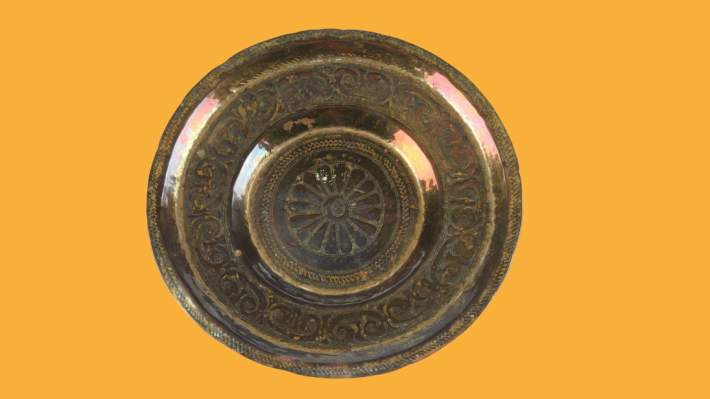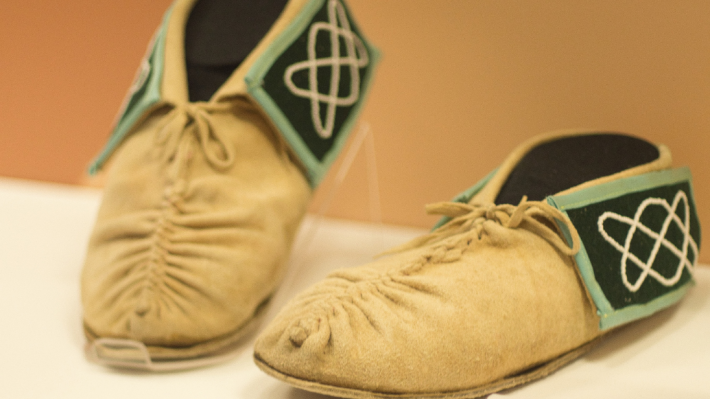
the migration of the mbira
Learn about the rich history of the mbira with assistant curator Agrippa Njanina.
The Mbira Vs Popular Music
When I was growing up in Zimbabwe, I listened exclusively to pop music such as Michael Jackson, Whitney Houston and U2.
If you wanted to be seen as progressing, you had to adopt the British way of life, including religion. I was born to a Catholic mother who valued being Catholic. Religions and churches change the customs of the people – they challenge what you’re doing. The mbira would have been considered demonic as it doesn’t align with the teachings of God. To me, it's just a discovery of people, of a sense of self.
In Zimbabwe, people would have played the mbira, but you wouldn’t listen to them – you would push them to your peripheries because it’s not something you should be seen doing. It was more appropriate to be heard singing along to Bono. We just grew up that way. You pushed back the sound - the local sounds, the traditional sounds. You pushed them out and adopted the Western sounds.
I was curious to understand these traditions and dispel some of the myths that were associated with the mbira. I wanted to deep dive into it and learn it myself and see if it's demonic. These are the conceptions that people have and the perspectives that people have of most African traditions.
When you hear people talking about themselves in songs, sharing their experiences in songs, telling their descendants what to know about the past and how to look forward to the future, I think that's kind of the basis of what has been lost.
The Architecture of the Mbira
When you look at the mbira, I often tell people it looks simple at first glance, but if you look closer you can see the unique architecture of its design. Why are the notes arranged in that design? Why are they getting smaller?

Over time the mbira has evolved to match scales. That shows you the connections between different cultures - we borrow from each other as well.
It’s a little bit out of tune because it’s turned by ear, there’s no other instrument used in order to get that perfect tone. You tend to tune the mbira to your own voice so that it expresses your voice. I think it’s amazing to be able to weave all that creativity and ability into one thing. Every mbira is unique in that it’s created for each singer - sometimes you have a happy feel to it, sometimes a sad feel. It all depends on how you play it.
I can't explain exactly what the artwork means, but I see happiness and joy in the dances painted on the mbira. It seems to me an idealised landscape of nature and happiness as it might have existed in times past symbolising a connection to the land and its timeless beauty.
The happy and peaceful scene imagined here is sharply contrasted by the reality of urban expansion and the effects of climate change. What was once vibrant and untouched is now a memory, a contrast to the realities of modern life.
The Story behind the Song
The mbira has migrated from a place that it would traditionally be found – in Zimbabwe. Now it's finding itself in Northern Ireland.

The song that I play on it talks about migrating from your location, sacrificing everything that you are - your language, your kith and kin, going out into the world, just like most of us have done. Usually it’s because there’s a problem – like the famine in the 1800’s when many Irish people moved to America. The same applies to today. A lot of people from all over the world are being displaced and going to different places.
One of the reasons why, and this is according to the song, people move is because their relatives, the people that are close to them, are so hostile to them. They've created a hostile environment to the extent that it feels better to move away from that place, to go somewhere else where it will be better to live amongst foreigners, people that you don't know. This is what the song really says.
Traditionally, when people sing there's no ownership of the song. It's not like I'm the one that wrote it. It's a community spirit. You don't perform it for people. You perform together. There's a roundness to it, a togetherness to it.
This song could be sung for hours continuously because people want to get deep into the spirit of meditation of what it really means to them. They want to feel the power of the words. It takes time to feel what you're saying. When people start singing, different musicians will take over. For example, I might sing for a length of time leading the song, creating my own lyrics. And then somebody else will take over, and so on. It's the repetition that deepens the experience.
I learnt the mbira when I was already over here in Northern Ireland. It sings my mother’s songs So, I feel closer to those traditions and my origins. I play with local musicians here, but obviously I would want to play with more people.
I like that people can join in on a trad session here with a tin whistle, ukulele, banjo or a violin; all sorts of musical instruments. I think it's fantastic. It’s good to get a gathering where there’s no judgement, no speciality, everybody is just playing as they feel.
The Perfect Performance Setting
The Ulster Folk Museum was the perfect place for this musical performance. I have always seen similarities between where I'm from in rural Zimbabwe, and the Ulster Folk Museum. My mother still has a house that is thatched, so the rural aspect of the Folk Museum has always been a huge draw to me - when I walk around the Folk Museum, I feel like I am at home.
Traditionally, the mbira is played in a rural setting. Recycled materials are usually shaped into mbira’s – something which happens in a rural setting. The rural signifies what is left behind as the city is moving forward very quickly.
However, the mbira moves along with the people and traditions. People have commercialised the making of the mbira, and continue to make it in cities, but it will have lost a little bit of what the instrument really represents. It won't be in its place but at the same time continuing its role of bringing communities together and reminding us what the world used to be.
It isn’t stuck in one place- which is why we see it in Northern Ireland right now.
You Might Also Like
Nigerian Twin Figures
Twin Figure statuettes from Nigeria hold profound meaning for Nigerian communities. In this article, volunteer Beulah reflects on the personal significance of seeing these on display.
Bida Plate: Ammunition into Art
Guest blog from Dr. Olusegun Morakinyo, exploring the African collection and in particular, the Bida plate.
Inclusive Global Histories
Our journey towards decolonisation, diversity and inclusion


